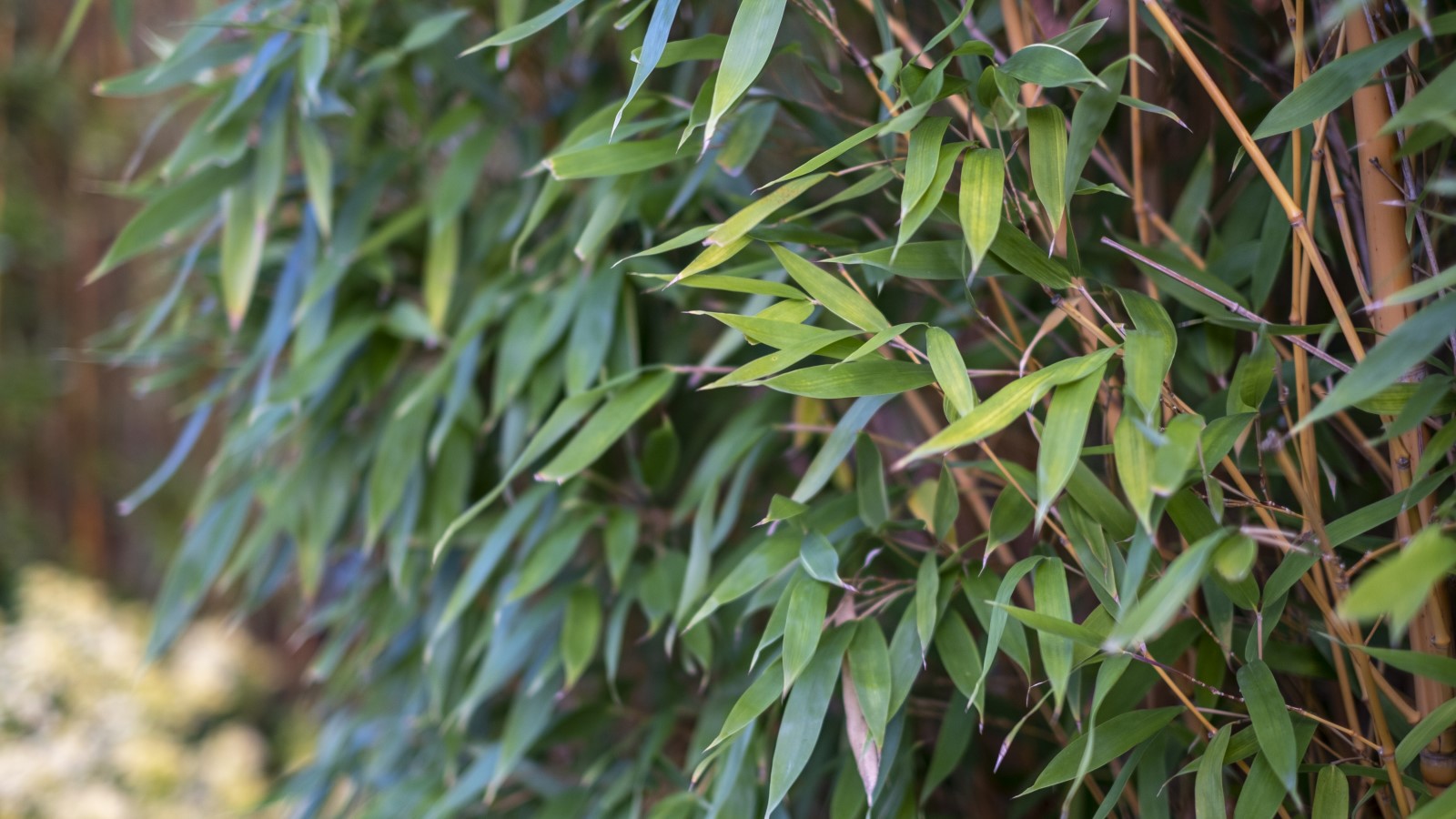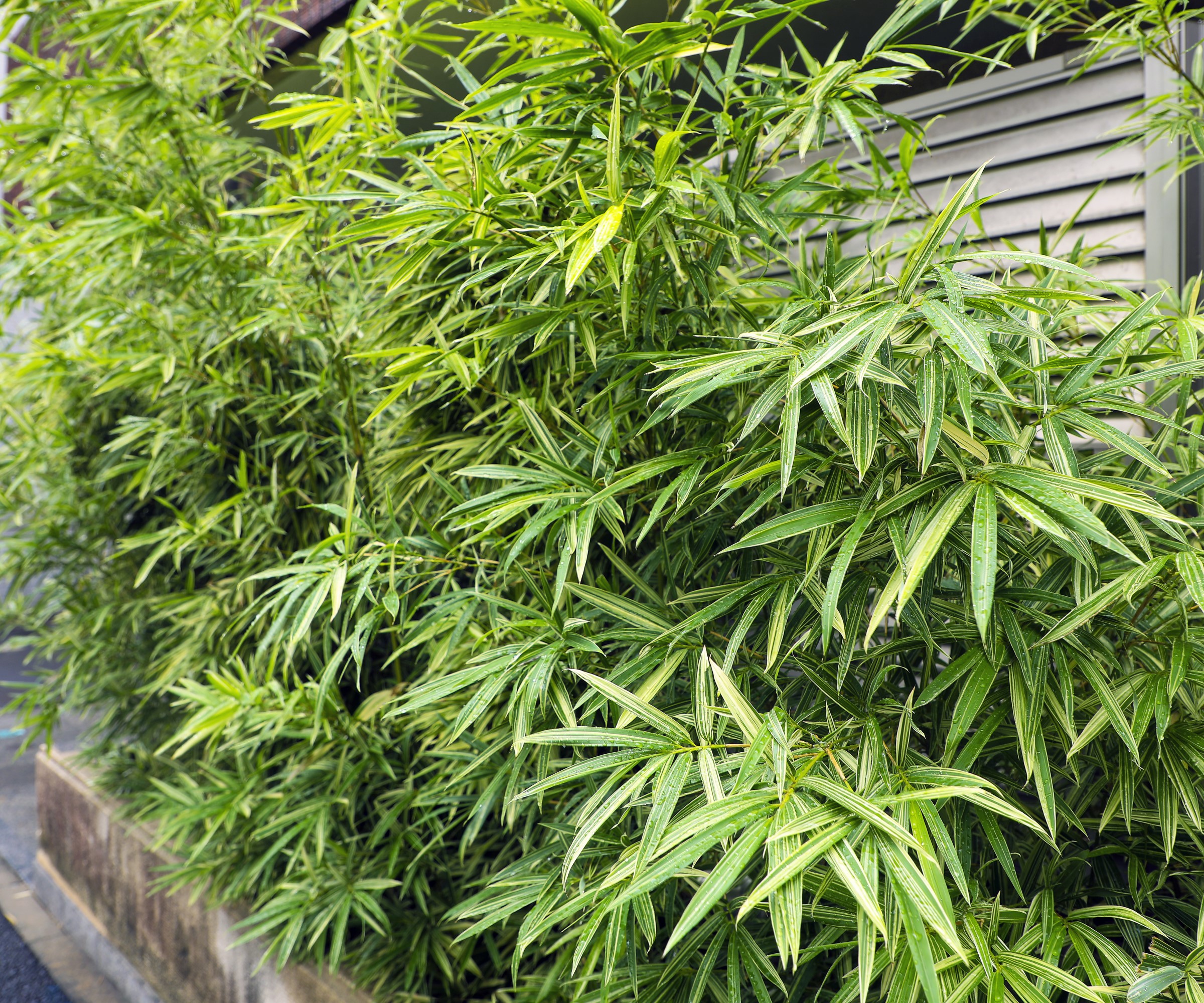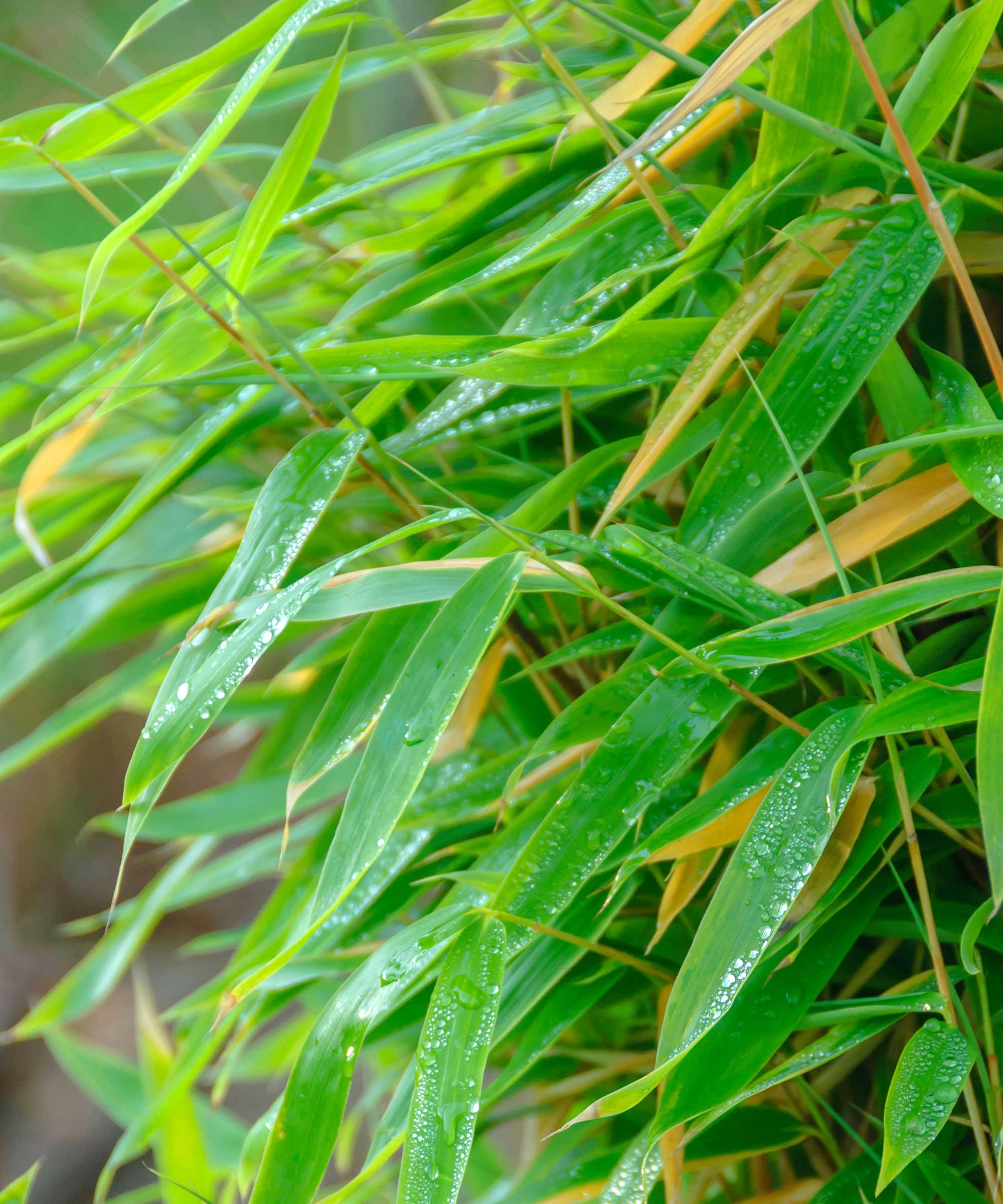Is bamboo drought-tolerant? How to choose the best types to survive dry conditions
The drought tolerance of bamboo can take several years to build up, as the plant gets itself fully established


Bamboo does offer many benefits in the backyard, with its statement leafy and structural stems looking highly attractive and capable of being grown as a screen to give added privacy in a space.
While bamboo is often regarded as bringing a lush and almost jungle-esque feeling to a space, there are some types of bamboo that have a good level of drought tolerance and can be utilized in drier landscapes.
If you are thinking of growing bamboo in a warm and dry climate then it pays to make sure you choose the right type, as not all will be happy in such conditions. Be warned, however, as it can take time for the bamboo to be fully suited to a dry garden, and it may still need watering after that to keep it fully thriving.

Bamboo is often contained to stop it spreading
Does bamboo like dry conditions?
Bamboo is quite drought-tolerant once its root system is established. In order for bamboo to fully establish its rhizome root system it can take up to three years, and will need regular watering during those early years.
However, once it does get established in the garden it can be a viable choice for drought tolerant planting ideas. It can thrive in periods of drought thanks to certain characteristics that bamboo has that can make certain varieties more adaptable and resilient to withstand periods of drought.
Fern Berg, Gardening Expert & Founder of Tree Vitalize, hails bamboo as a ‘fantastic choice’ for dry environments and drought tolerant landscaping ideas thanks to, what she describes as, its ‘impressive drought tolerance’.
She says: ‘Its deep and extensive root system, water conservation mechanisms like waxy leaf coatings and leaf shedding, and the ability to store water and nutrients in its rhizome system all contribute to bamboo's resilience.
Design expertise in your inbox – from inspiring decorating ideas and beautiful celebrity homes to practical gardening advice and shopping round-ups.
‘Bamboo also has excellent adaptability, meaning it can adjust growth rate and resource allocation in order to survive and thrive in dry conditions.’
There are different types of bamboo and cultivars that do vary in their drought tolerance, so it is advisable to do some research, or speak to bamboo specialists, to ensure you get a variety that suits your needs if you live in dry US hardiness zones.
Even drought-tolerant varieties of bamboo will benefit from irrigation during hot and dry periods. When watering plants in hot weather it is best to water them deeply and less often, as opposed to little and regular. This is a common garden watering mistake that can leave plants more susceptible to drought as they will develop shallow roots. Also consider mulching to keep water locked into the ground and keep soil moist during the summer for longer.

Fern has planted and currently cares for over 100 different
native and exotic fruit, nut, and ornamental trees. She also cultivates
an extensive vegetable garden, several flower gardens and cares for an
ever-growing happy family of indoor plants. Fern has a special interest
in biodynamic farming, food production and closed loop agriculture. She
founded Tree Vitalize to help guide others with an interest in tree
planting, identification and care.

The waxy leaves of bamboo can help cut down on water loss
What is the most drought-tolerant bamboo?
Bamboo comes in clump-forming or running types, with the latter spreading from horizontal underground stems that can often lead to people wanting to know how to stop bamboo from spreading as they grow vigorously and can get out of control.
There are clumping types of bamboo that are more drought-tolerant thanks to their more compact root system, however some of the most drought-tolerant types of bamboo are actually the running varieties.
Miguel Palma, a professional gardener and owner of Jardin Tienda, hails Phyllostachys aureosulcata, commonly known as Yellow Groove Bamboo, as a bamboo that excels in very dry conditions.
He says: ‘It possesses an impressive ability to thrive even during extended periods of limited rainfall, showcasing its remarkable drought tolerance. Phyllostachys bambusoides, or Giant Timber Bamboo, also exhibits good resilience in the face of dry spells once its roots are firmly established.
‘Phyllostachys edulis, known as Moso Bamboo, leans towards a preference for regular moisture. However, it can endure brief periods of drought once it reaches maturity, showcasing a moderate level of drought tolerance.
‘Similarly, Phyllostachys nigra, or Black Bamboo, can weather moderate drought conditions, especially as it matures and establishes a robust root system.’
While clumping bamboos can get a bit more susceptible to drought stress, there are varieties better suited to thriving in dry conditions. For example, many of the Fargesia types of clumping bamboo species tend to need more consistent moisture, but varieties like Fargesia robusta and Fargesia murielae can be suited to dry conditions.
As well as many of the Fargesia types, varieties in the bamboo species of Sasa and Chimonobambusa also prefer moister soils and do not have a high tolerance to drought.
Shop bamboo trees at Fast Growing Trees

Miguel Palma is a professional gardener with over 20 years of experience in the horticultural business. He is the owner of JardinTienda, a site dedicated to reviewing gardening products and providing independent buyers guides.
FAQs
Do bamboo need lots of water?
Bamboo will need regular watering for the first few years to get the roots fully established. This can mean being prepared to water plants at least once a week, rising to three or four times each week during periods of hot and dry weather. If you are growing your bamboo in pots, it can mean daily watering during the summer.
Once the bamboo is established it does not need as much watering and should be checked every 7-10 days. Check the soil moisture level a few inches down and only water if it feels dry. Generally, bamboo wants around an inch of water a week. Keep a close eye on watering, as both underwatering and overwatering can be reasons why bamboo plants turn yellow.
Bamboo can be a viable option when you design a drought tolerant yard, or if you are considering xeriscaping ideas, providing you do some homework and pick the right type of bamboo. There are lots of options for bamboo that can work in dry gardens, but it does take a while to get them established and to their full potential of drought tolerance. Remember that cutting bamboo will be essential to keep the plant tidy and contained, as it is a fast growing plant and potentially an invasive plant if you choose running varieties.

Drew has worked as a writer since 2008 and was also a professional gardener for many years. As a trained horticulturist, he worked in prestigious historic gardens, including Hanbury Hall and the world-famous Hidcote Manor Garden. He also spent time as a specialist kitchen gardener at Soho Farmhouse and Netherby Hall, where he grew vegetables, fruit, herbs, and cut flowers for restaurants. Drew has written for numerous print and online publications and is an allotment holder and garden blogger. He is shortlisted for the Digital Gardening Writer of the Year at the 2025 Garden Media Guild Awards.